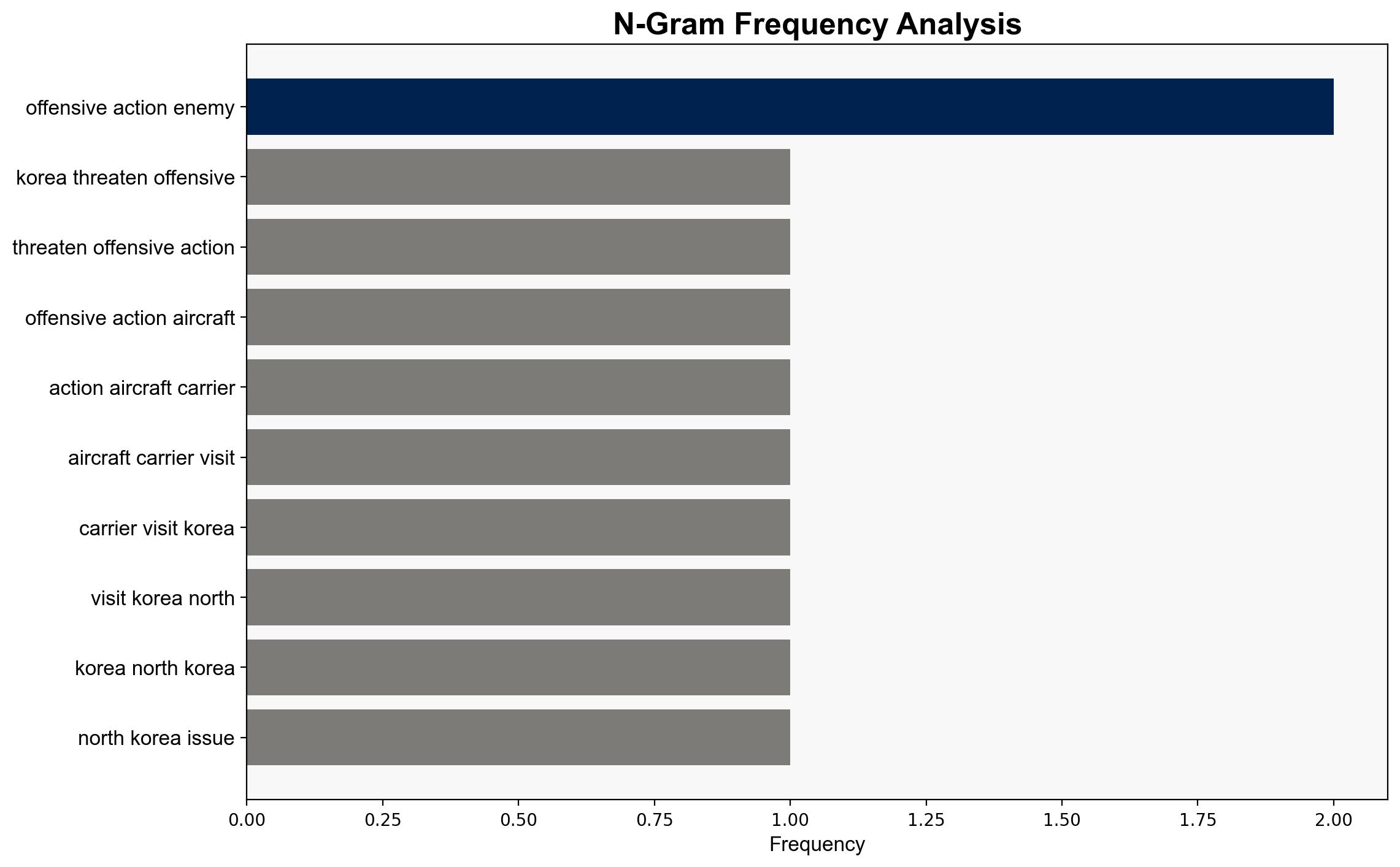N Korea threatens offensive action as US aircraft carrier visits S Korea – Al Jazeera English
Published on: 2025-11-08
Intelligence Report: N Korea threatens offensive action as US aircraft carrier visits S Korea – Al Jazeera English
1. BLUF (Bottom Line Up Front)
There is a moderate confidence level that North Korea’s threats are primarily a strategic posturing to deter perceived aggression and reinforce its negotiating position. The most supported hypothesis suggests that North Korea aims to leverage military threats to influence diplomatic engagements with the United States and South Korea. Recommended action includes maintaining a strong defensive posture while pursuing diplomatic channels to de-escalate tensions.
2. Competing Hypotheses
1. **Hypothesis A**: North Korea’s threats of offensive action are genuine and indicate an imminent military escalation in response to the US aircraft carrier’s presence and joint military exercises.
– **Supporting Evidence**: Recent missile launches, strong rhetoric from North Korean officials, and historical patterns of military provocations.
2. **Hypothesis B**: The threats are primarily strategic posturing aimed at gaining leverage in diplomatic negotiations and deterring perceived aggression from the US and South Korea.
– **Supporting Evidence**: Timing of threats coincides with diplomatic engagements, historical use of threats for negotiation leverage, and absence of immediate military mobilization.
Using ACH 2.0, Hypothesis B is better supported as it aligns with North Korea’s historical behavior of using threats to influence diplomatic outcomes without immediate escalation.
3. Key Assumptions and Red Flags
– **Assumptions**: North Korea’s leadership is rational and seeks to avoid full-scale conflict. The US and South Korea’s military presence is perceived as a direct threat by North Korea.
– **Red Flags**: Potential misinterpretation of military exercises as preparation for an attack. Lack of direct communication channels could lead to miscalculation.
– **Blind Spots**: Limited insight into internal decision-making processes within North Korea. Potential hidden military capabilities or alliances.
4. Implications and Strategic Risks
– **Patterns**: North Korea’s pattern of missile tests following diplomatic tensions.
– **Cascading Threats**: Potential for regional arms race or increased militarization.
– **Escalation Scenarios**: Miscalculation leading to unintended military conflict. Economic sanctions leading to further isolation and aggressive posturing.
– **Geopolitical Dimensions**: Impact on US-South Korea relations and broader regional stability.
5. Recommendations and Outlook
- Enhance diplomatic efforts through backchannel communications to reduce tensions.
- Maintain a robust defensive posture to deter potential aggression.
- Scenario Projections:
– **Best Case**: Successful diplomatic engagement leading to de-escalation.
– **Worst Case**: Miscalculation resulting in military conflict.
– **Most Likely**: Continued strategic posturing with intermittent diplomatic engagements.
6. Key Individuals and Entities
– Kim Yong Nam (recently deceased, former head of state)
– Pete Hegseth (US Defense Secretary)
– Kim Jong Un (North Korean leader)
7. Thematic Tags
national security threats, cybersecurity, counter-terrorism, regional focus





